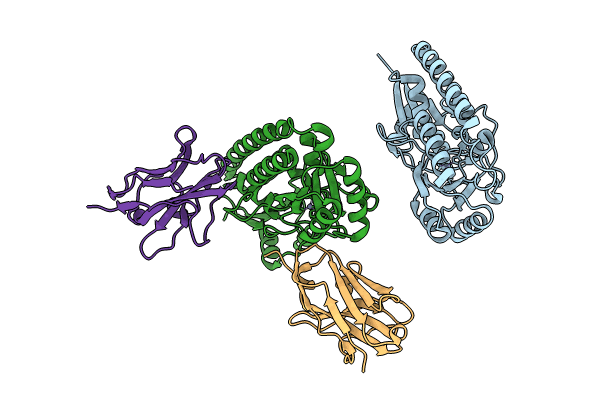
Deposition Date
2024-03-01
Release Date
2024-06-19
Last Version Date
2024-10-23
Entry Detail
PDB ID:
8YJ8
Keywords:
Title:
Characerization of a novel format scFvXVHH single-chain Biparatopic antibody against a metal binding protein, MtsA
Biological Source:
Source Organism:
Streptococcus pyogenes (Taxon ID: 1314)
Vicugna pacos (Taxon ID: 30538)
Vicugna pacos (Taxon ID: 30538)
Host Organism:
Method Details:
Experimental Method:
Resolution:
1.65 Å
R-Value Free:
0.22
R-Value Work:
0.18
R-Value Observed:
0.18
Space Group:
C 1 2 1


